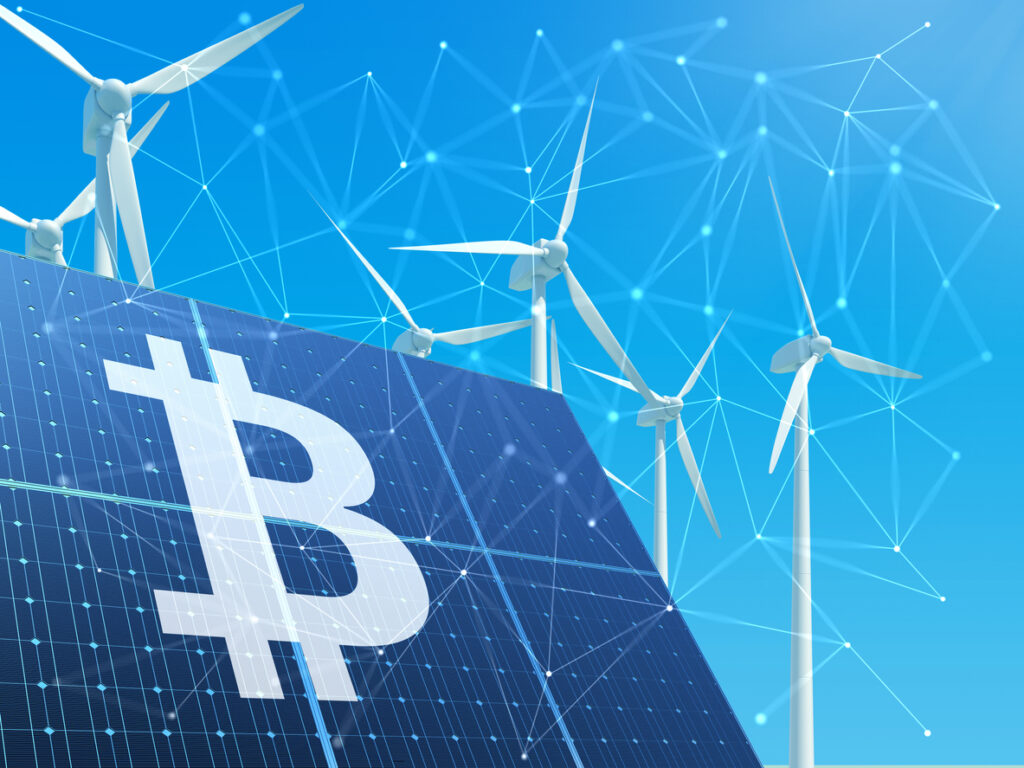In Part 1 of this 4-part series, we covered some of our most notable moments in the first quarter of 2022 as the Bitcoin and energy narrative unfolded for this year.
(If you missed Part 1, click here.)
In Part 2, we’re picking up right where we left off, in the second quarter of the year.
April: Texas Takes a Beat
Amid speculation and regulation attempts, Bitcoin continued to be a big business.
Our team attended Bitcoin 2022 in Miami where major partnerships and institutional investments were announced. It was clear that the race toward efficiency was on.
In an article for Blockworks, CEO John Belizaire described that “the science of crypto mining isn’t about spending computational energy. It’s about building the most efficient computational infrastructure. When you understand the science through this lens, crypto mining is really an entrepreneurial endeavor that will revolutionize data centers and move the world toward green energy.”
The move toward clean energy in the growing Bitcoin space brought many entrepreneurs to Texas in recent years.
But, how is a state with a grid as fragile as its (remember, the Texas grid nearly collapsed in the 2021 Great Freeze), also the destination of “Bitcoin country”? Texas’ unique energy market was the focus of our conversation with Chris Tomlinson, a journalist for the Houston Chronicle, in April. Chris shared his firsthand experience of the Great Freeze and the fluctuating energy market in Texas and some of his concerns relating to the increase of Bitcoin mining in the state.
Less than a week after our conversation with Chris, in response to a recent influx of large loads with fast electrification times, the Electric Reliability Council of Texas (ERCOT) announced an interim process to handle large loads, and assigned a special task force to oversee it. The requirements are not particular to crypto miners, but the inundation of mining companies to Texas over the last two years was definitely a contributing factor.
The attention on crypto speculation and mining regulation flooding the media increased.
Soon, all attention turned to institutional investors. Would they get behind the mission to energize, decentralize, and stabilize?
May: Institutional Investment in Green Bitcoin Mining Grows
Spring Lane Capital, a private equity firm, focused on sustainability solutions in the energy, food, water, waste, and transportation industries, invested $35 million in Soluna Computing in May. We invited Rob Day, Spring Lane Capital Partner and Co-Founder, onto our podcast shortly after our new partnership was announced to deliver a fresh perspective on institutional investment in renewable-powered Bitcoin mining.
“Soluna is the only true green bitcoin company we’ve yet seen,” said Rob. “Going after wasted renewable energy – ‘spilled power’ – is a compelling solution – and fixes both bitcoin’s climate problem and wind power’s grid problem.”
Around the same time, the NY State Assembly passed Assembly Bill A7389C, a two-year moratorium on a subset of new Bitcoin mining operations in the state.
We shared a few of our thoughts on the NY Mining Bill on our blog. To recap, we argued that banning the new development of carbon-based mining operations is a positive development. We think that government regulation of the mining industry is not inherently a bad thing. Regulation done right can dissuade bad actors, ultimately benefiting the health of the mining industry (not to mention the Earth) in the long run.
Singling out Bitcoin mining from other energy-intensive industries continues to push the already prevalent narrative that mining is unusually bad for the environment. This isn’t true.
Bitcoin mining has the potential to support more of what our environment really needs–clean energy.
We leveraged our team’s expertise to make this case in response to the White House Office of Science and Technology Policy’s Request for Information on the Climate Implications of Digital Assets where we encouraged smart policy that can incentivize renewables & clean computing.
We outlined the steps we are taking to build the future of computing through the efficient design of our Modular Data Centers that bring an immediate solution for stabilizing our nation’s energy grid. We even the world to take a seat at our engineering table and ask us some tough questions.
Then, we continued to spend time with energy experts, including author and entrepreneur Peter Kelly-Detwiler, to learn more about the necessary innovation required to build a resilient electrical infrastructure and pave the way to a truly sustainable future.
June: Efficiency Pays
Bitcoin’s summer was anything but bright.
In the investor zeitgeist, there was growing concern about Bitcoin’s ability to go mainstream.
With the steep decline in valuations and the mass layoffs, there were not a lot of positive things to say about crypto markets.
Yet in the midst of this crypto downturn, the Soluna business model remained robust and resilient.
The crypto downturn of 2022 made it clear that efficiency pays, and Soluna delivers an elite level of efficiency.
The third quarter of 2022 brought an increased need for decoding misinformation from politicians and lobbyists in the Bitcoin-energy debate, big wins in federal legislation for the future of cleantech, and more profound conversations concerning Bitcon’s climate impact.
Stay tuned for more in Part 3.




